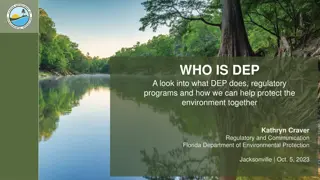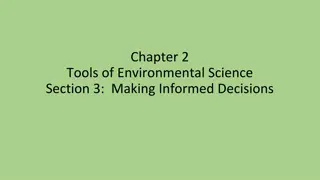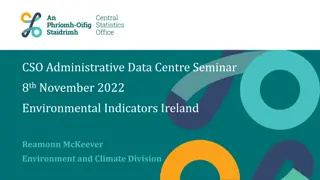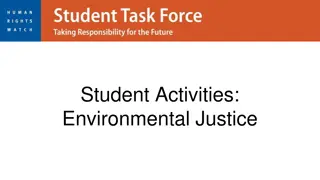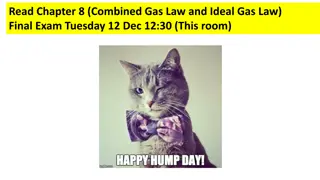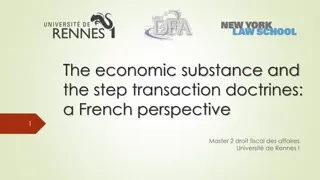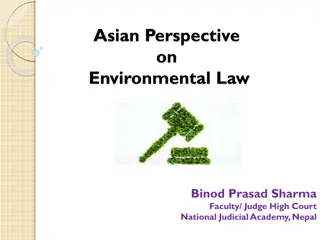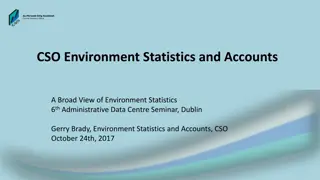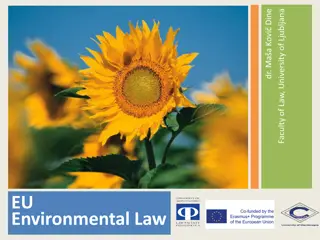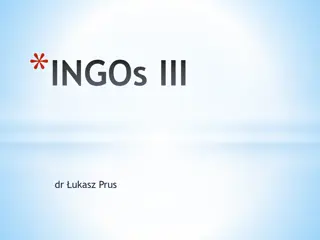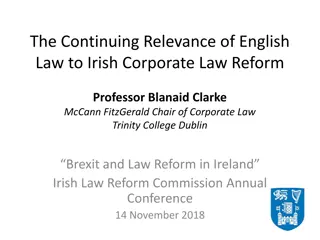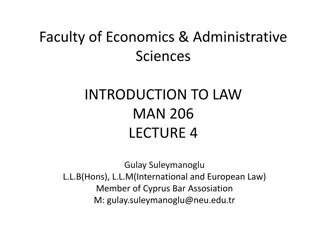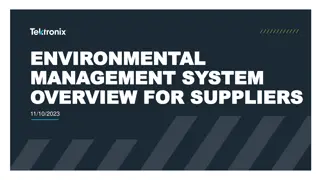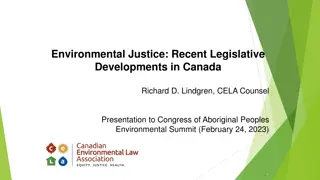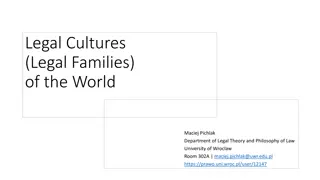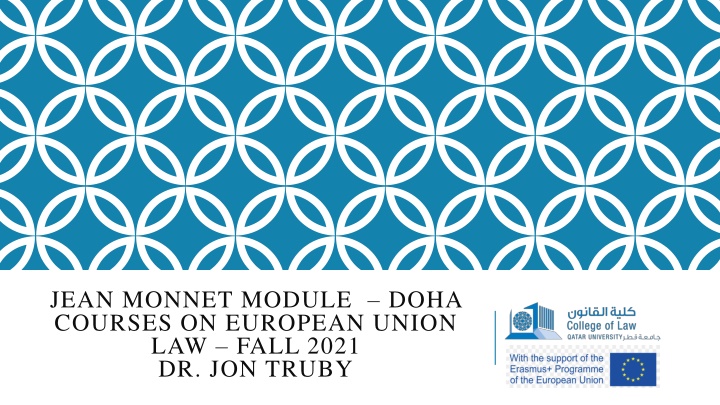
Air and Noise Pollution Impact on Health and Environment in the European Union
Learn about the detrimental effects of air and noise pollution on public health and the environment in the EU. Explore the EU's efforts to combat air pollution from various sources such as industry, transport, energy production, and agriculture. Discover the measures being taken to reduce noise levels and improve air quality standards for a healthier and cleaner future.
Download Presentation

Please find below an Image/Link to download the presentation.
The content on the website is provided AS IS for your information and personal use only. It may not be sold, licensed, or shared on other websites without obtaining consent from the author. If you encounter any issues during the download, it is possible that the publisher has removed the file from their server.
You are allowed to download the files provided on this website for personal or commercial use, subject to the condition that they are used lawfully. All files are the property of their respective owners.
The content on the website is provided AS IS for your information and personal use only. It may not be sold, licensed, or shared on other websites without obtaining consent from the author.
E N D
Presentation Transcript
JEAN MONNET MODULE DOHA COURSES ON EUROPEAN UNION LAW FALL 2021 DR. JON TRUBY
Introduction Air pollution and excessive noise harm our health and our environment. Air pollution mainly stems from industry, transport, energy production and agriculture. The 2013 EU air quality strategy aimed to achieve full compliance with existing air quality legislation by 2020 and set long-term objectives for 2030. As part of the European Green Deal, the EU is revising these standards, to align them more closely with the recommendations of the World Health Organization.
Introduction The EU also aims to improve overall EU legislation for clean air, building on the lessons learnt from the 2019 evaluation ( fitness check ) of the Ambient Air Quality Directives. The 2002 Environmental Noise Directive helps to identify noise levels in the EU and to take the necessary measures to reduce them to acceptable levels. Separate legislation regulates noise pollution from specific sources.
General Background Air pollution can cause cardiovascular, respiratory diseases and cancer. It is the leading environmental cause of premature death in the EU. Certain substances, such as arsenic, cadmium, nickel and polycyclic aromatic hydrocarbons, are human genotoxic carcinogens, and there is no identifiable threshold below which they do not pose a risk. Air pollution also negatively impacts on the quality of water and soil and damages ecosystems through eutrophication and acid rain. Agriculture and forests are therefore affected, as well as material and buildings.
General Background Air pollution has many sources, but mainly stems from industry, transport, energy production and agriculture. While air pollution in Europe has generally decreased in recent decades, the Union s 2013 long-term objective, namely to achieve levels of air quality that do not have significant negative impacts on human health and the environment , still remains to be attained. Air quality standards are often not complied with, especially in urban areas (air pollution hotspots ) which is where the majority of Europeans live.
General Background Environmental noise levels are rising in urban areas, mainly as a result of increasing traffic volumes and intensifying industrial and recreational activities. It is estimated that around 20% of the population of the EU are subjected to noise levels that are considered unacceptable. This can affect quality of life and lead to significant levels of stress, sleep disturbance and adverse health effects, such as cardiovascular problems. Noise also has an impact on wildlife.
Achievements in combating air pollution Air quality in Europe has much improved since the 1970s. Concentrations of substances such as sulphur dioxide, carbon monoxide, benzene and lead have been significantly reduced. The EU has three different legal mechanisms to manage air pollution: 1. Defining general air quality standards for ambient concentrations of air pollutants; 2. Setting national limits on total pollutant emissions; 3. Designing source-specific legislation.
Ambient Air Quality Building on the objectives of the 2005 Thematic Strategy on Air Pollution, a revised directive on ambient air quality came into effect in June 2008, merging most of the existing legislation in the field. Only the fourth daughter directive of the earlier Air Quality Framework Directive is currently still in place, setting target values (less strict than limit values) for arsenic, cadmium, mercury, nickel and polycyclic aromatic hydrocarbons. Directive 2008/50/EC on ambient air quality aims to reduce air pollution to levels that minimise harmful effects on human health or the environment.
Ambient Air Quality To that end, it lays down measures to define and establish ambient air quality objectives (i.e. limits not to be exceeded anywhere in the EU) relating to the main air pollutants (sulphur dioxide, nitrogen dioxide, oxides of nitrogen, (fine) particulate matter, lead, benzene, carbon monoxide and ozone). Member States are required to define zones and agglomerations in order to assess and manage ambient air quality, to monitor long-term trends and to make the information available to the public.
Ambient Air Quality At the end of 2013, the European Commission launched the Clean Air Programme for Europe, with two key objectives: 1. Compliance with existing legislation by 2020. 2. New air quality objectives for the period up to 2030. The main legislative instrument to achieve these objectives is the revised National Emission Ceilings Directive (EU) 2016/2284. It sets stricter national emission ceilings for the five key pollutants sulphur dioxide, nitrogen oxides, non-methane volatile organic compounds, ammonia and fine particulate matter.
Ambient Air Quality The directive requires Member States to draw up national air pollution control programmes. It transposes the commitments made by the EU and its Member States in 2012 to reduce emissions by 2020 under the revised Gothenburg Protocol to Abate Acidification, Eutrophication and Ground-level Ozone of the United Nations Economic Commission for Europe (UNECE) Convention on long-range transboundary air pollution. A new directive to reduce air pollution from medium combustion plants, such as those involved in electricity generation or domestic heating, was also adopted as part of the programme.
Road Transport Several directives have been adopted to limit pollution from road transport by setting emission performance standards for different categories of vehicles, such as cars, light commercial vehicles, lorries, buses and motorcycles, and by regulating the quality of fuel. The current Euro 5 and Euro 6 emission standards for cars and light vans set emission limits on a number of air pollutants, in particular nitrogen oxides and particulate matter. Member States are required to refuse the type approval, registration, sale and introduction of vehicles (and replacement pollution control devices) that do not comply with these limits.
Road Transport Since September 2017, a more realistic test cycle has been in use: Real Driving Emissions (RDEs) are now tested for new car models to better reflect real driving conditions. There are rules on in-service conformity, durability of pollution control devices, on-board diagnostic (OBD) systems, measurement of fuel consumption, and access to vehicle repair and maintenance information for independent operators. Similar rules are in place for heavy-duty vehicles such as buses and lorries. A 2018 regulation on type approval and market surveillance of motor vehicles entered into force on 1 September 2020,
Other Transport Emissions The EU has set limits on the sulphur content of marine bunker fuels used in ships operating in European seas. The general sulphur limit has fallen from 3.5% to 0.5% in 2020. Since 2015, an even stricter standard of 0.1% has applied in certain areas designated Sulphur Emission ControlAreas (SECAs). Further emission performance standards were set in 2016 for non-road mobile machinery, such as excavators, bulldozers and chainsaws, as well as for agricultural and forestry tractors and recreational craft such as sport boats.
Emissions from Industry The 2010 Industrial Emissions Directive (IED) covers highly polluting industrial activities that account for a share of pollution in Europe. It consolidates and merges all directives into one coherent legislative instrument, to facilitate implementation of the legislation and of minimising pollution from various industrial sources. E.g. Directives on waste incineration, volatile organic compounds, large combustion plants, integrated pollution prevention and control, etc.)
Emissions from Industry The IED lays down the obligations to be met by all industrial installations, contains a list of measures for the prevention of water, air and soil pollution. It provides a basis for drawing up operating licences or permits for industrial installations. It takes into account the total environmental performance of a plant, including the use of raw materials or energy efficiency.
Achievements Regarding Noise Pollution The EU s approach to noise pollution is two-fold, involving: - A general framework for the identification of noise pollution levels requiring action at both Member State and EU level; - A series of legislation on the main sources of noise, such as road, air and rail traffic noise, and noise from equipment for outdoor use.
Framework Directive on Environmental Noise The 2002 Framework Directive on environmental noise aims to reduce exposure to environmental noise by 1. Harmonising noise indicators and assessment methods, 2. Gathering noise exposure information in the form of noise maps , 2. Making this information available to the public. - On this basis, the Member States are required to draw up action plans to address noise problems. Noise maps and action plans need to be reviewed at least every five years.
Regulation on the Sound Level of Motor Vehicles The 2014 regulation on the sound level of motor vehicles introduces a new test method for measuring noise emissions, lowers the existing noise limit values and includes additional sound emission provisions in the type-approval procedure. Other regulations set noise limits for mopeds and motorcycles. These regulations are complemented by further rules on the testing and limiting of tyre rolling noise levels and their gradual reduction.
EU Aviation Noise Rules Since June 2016, EU aviation noise rules have applied to airports with more than 50 000 civil aircraft movements per year. This approach consists of four principal elements designed to identify the most cost-efficient way of tackling aircraft noise at each individual airport: - Reducing noise levels at the source through modern aircraft, - Managing the land around airports in a sustainable way, - Adapting operational procedures to reduce the impact of noise - If necessary, introducing operating restrictions like night flights ban.
Railway Interoperability Directive In the context of the 2008 railway interoperability directive, a 2014 technical specification for interoperability (TSI) on noise (amended in 2019) sets maximum levels of noise that new (conventional) railway vehicles can produce. The 2015 noise charge regulation incentivises the retrofitting of freight wagons with low-noise composite brake blocks.

